Everything You need to know about Bill of Lading
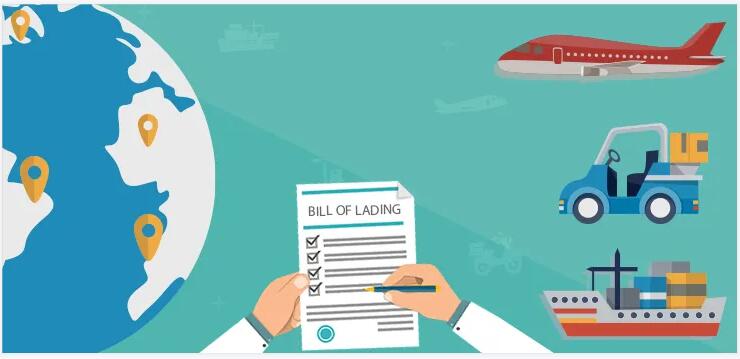
If you are shipping for the first time, the term “Bill of Lading” can be confusing to you. Let’s learn about what it is and why you need one for international shipping.
- Definition of Bill of Lading
- Functions of the Bill of Lading
- Importance of the Bill of Lading in International Trade
- What are the Key Elements of a Bill of Lading?
- Common Challenges and Disputes of a Bill of Lading
- Electronic Bills of Lading (e-BOL)
- Pros and Cons of Electronic Bill of Lading
- Future of the Bill of Lading
- Frequently Asked Questions about Bills Of Lading
1. Definition of Bill of Lading
This legal document contains crucial information such as the kind, quantity, description, and packing of items being shipped. Additionally, it outlines the terms and conditions agreed upon by all parties involved in the shipment process.
The bill provides an accurate record of when ownership is transferred from one party to another throughout the journey.
As a new trader, you can be overwhelmed by these terms. Let’s break down those so that you can understand better.
- “Shipper” refers to an individual or organization initiating shipment.
- “Carrier” is either a shipping line company or a trucking firm responsible for transporting goods.
- “Consignee” is typically identified as an individual or company that receives ownership or takes possession of the shipped items upon delivery at the designated location. It can be your company or any other third party from the manufacturer.
- “Packaging specifications” involve guidelines on how products should be securely packed.
- “Discrepancies” refer to inconsistencies between documented information and actual cargo received.
- “Liability” signifies responsibility held by either party involved in the case of loss or damage incurred during transit.
You will see the application of the bill of lading in Ocean, Air, and Inland transportation.
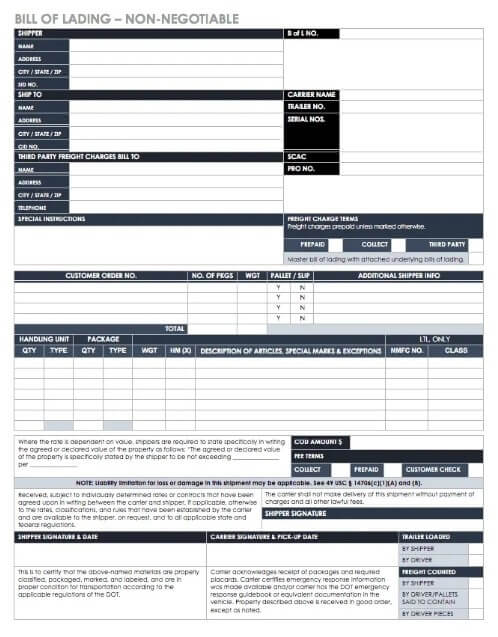
2.Functions of the Bill of Lading
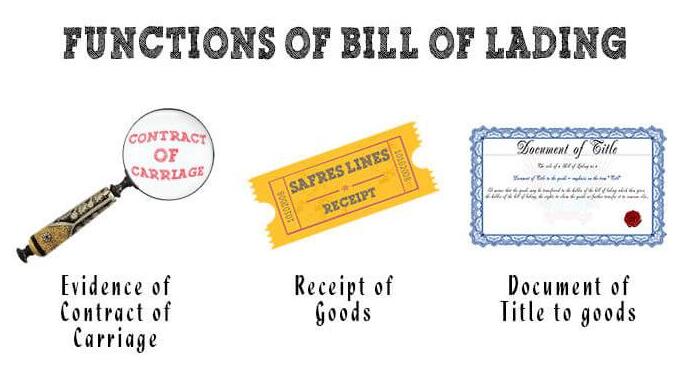
- Proof of a valid contract: The Bill of Lading is proof that the customer and the carrier have a valid contract. It says what was agreed upon and gives information like the number, condition, weight, and type of goods being moved.
- Receipt of goods: This shows that the goods were given to the carrier or their agent at a certain time and place. This helps keep people from arguing about whether or not the package was delivered.
- Title transfer: This lets the ownership of things change from one person to another without actually moving the goods. This is also important in trade financing, where banks may release funds based on ownership or endorsement.
- Document of carriage: It makes sure that shipments follow the rules and laws that apply to them and gives necessary information about the places of origin and destination.
- Proof for insurance claims: Bills of Lading are used by insurance companies to check if a shipment was lost or damaged in transit before paying out claims made by shippers or recipients against carriers or freight forwarders.
- Legal protection: If there are disputes or claims about loss or damage during transit or about one party not meeting its contractual responsibilities, having an accurate Bill of Lading helps prove the facts to the court.
- Customs clearanceis easier because authorities can use Bills of Lading to correctly calculate import duties based on the stated values listed on the forms.
3. Importance of the Bill of Lading in International Trade
So, why the bill of lading is so vital?
Information such as the type of products being shipped, the quantity being shipped, the destination, the shipper, and the recipient can all be found on this legal document. This document verifies that the products were delivered to the carrier and establishes the owner of the commodities throughout transportation.
In the event of a mishap, it is also useful for customs and insurance purposes. Thus, it functions as a reliable partner in international business transactions, ensuring that all issues are resolved amicably and without incident.
This document is proof that your shipment was received by the vessel. This document serves as proof of the rightful owner of the shipped items at all times.
This paper is useful for resolving disputes between you and the other party. The Bill of Lading is your reliable partner in international trade; it ensures everything is done correctly and safely.
4. What are the Key Elements of a Bill of Lading?
This comprehensive document consists of several key elements that ensure the smooth and secure movement of goods from one location to another. Some of the key elements are:
- Shipper’s Information: The bill of lading begins with essential details about the shipper, including their name, address, contact information, and identification number. This helps identify who is responsible for shipping the goods.
- Consignee’s Information: Similarly important is the consignee’s information – the party receiving the goods at their destination. It includes their name, address, and contact details to establish clear communication channels between both parties.
- Carrier Details: The carrier section indicates which company or individual will transport the cargo from its origin to its final destination. Their contact information ensures swift coordination during transit.
- Description of Goods: A detailed description of each item being shipped is crucial for accurate tracking and identification purposes. It generally includes specifics like quantity, weight, or volume measurements (depending on the type), packaging type (e.g., pallets or crates), special handling instructions, if any (fragile items), etc.
- Origin and Destination: Clearly stating where the shipment originates from and where it should be delivered avoids any confusion along its journey.
- Freight Charges: The amount charged for transporting goods plays a significant role in financial transactions between shippers and carriers. Bill of ladings typically include freight charges payable by either party
5. Common Challenges and Disputes of a Bill of Lading
As a bill of lading is an essential document in international shipment, any issue can create many problems for you. Therefore, you should be very careful about this document. Here are some common disputes:
- Inaccurate or incomplete information: This could include incorrect descriptions of goods, wrong quantities, or even typos in names and addresses. Such inaccuracies can lead to confusion and potential disputes.
- Discrepancies between parties: This may involve differences in freight rates, transit times, or additional services requested but not mentioned in the document.
- Delayed or lost Bills of Lading: Sometimes, Bills of Lading may be delayed during transportation or get lost altogether. These delays can cause disruptions in supply chains and result in disagreements about who should bear responsibility for any associated damages.
- Title ownership disputes: Most of the time, the Bill of Lading says who owns the goods being shipped. But problems can happen if more than one person claims ownership of the same things because of fraud, theft, a dispute over a contract, or an unauthorized transfer.
- Damaged cargo claims: If goods arrive at their location damaged or spoiled even though they were packed and handled as instructed on the Bill of Lading, there may be a dispute about who is responsible for the damage.
6. Electronic Bills of Lading (e-BOL)

The electronic bill of lading (e-BOL) is a modern replacement for the paper bill of lading. The goal of this electronic version is to simplify and update the record-keeping procedure.
Electronic bills of lading (e-BOLs) replace paper bills of lading (BOLs), which are susceptible to being misplaced or delayed during transport.
This process uses cutting-edge technology to guarantee safety and dependability throughout the supply chain employing electronic transmission and validation procedures.
7. Pros and Cons of Electronic Bill of Lading
Pros
- Efficiency: Electronic Bills of Lading make it easier to keep track of paperwork because they don’t need to be printed out. This saves time on administrative chores.
- Cost savings: When you send and store information electronically, you don’t have to pay for printing, postage, and real storage space.
- Accessibility: Digital Bills of Lading can be accessed from anywhere with an internet connection, so they can be checked and retrieved more quickly when required.
- Real-time updates: Using electronic systems linked to different parties involved in shipping operations, like banks or customs officials, real-time tracking updates can make the whole supply chain more transparent.
Cons
1. Dependence on technology: Depending only on digital platforms can be hard if there are glitches or system failures that make it hard to get important information at crucial times.
2. Questions of ownership: The person who owns the things it stands for can be changed by giving the paper bill to someone else. But you can not do that with e B/L.
3. Risks to data security: Electronic systems could be exposed to cyber threats like hacking or data breaches that expose sensitive information about shipments or financial transactions.
4. Legal problems: Some places may not fully recognize or accept e-BLs because they aren’t sure if they are real or can be used in court.
8. Future of the Bill of Lading
It doesn’t matter how hard you try you can not ignore the power of digitization. The shipping industry is no different.
According to Digital Container Shipping Association,nine ocean carriers have set a goal to convert 50% of their current paper bills of lading into digital versions in the next five years. Their ultimate objective is to completely transition to 100% digital bills of lading by 2030, all to expedite the digitalization of container trade.
With the development of cutting-edge technologies like blockchain, AI, and the IoT, we can anticipate a shift towards electronic or even smart contracts embedded within these documents.
This would streamline processes by eliminating paperwork, reducing manual errors, enhancing traceability, and providing real-time visibility into every step of the supply chain.
9. FAQs
Why is it Called a Bill of Lading?
The term “bill of lading” has been around for centuries; it comes from the Old English word “lad,” which means to load or put things aboard a ship. Merchants utilized handwritten notes or receipts to confirm the delivery and loading of goods during the era when trade was performed predominantly via sea travel.
Bills of lading are a more formalized version of these handwritten notes that arose through time.
Who is responsible for the bill of lading?
Typically, it is common practice for carriers or freight forwarders who undertake transport services to be responsible for generating this crucial document. They are entrusted with accurately documenting details such as cargo description, quantity, condition upon receipt/loading onto a vessel, and destination information.
What should I do if there is an error on the Bill of Lading?
Bill of lading errors should be reported immediately to the shipping company. They can make the appropriate adjustments to the paperwork for your cargo.
What is the Main Purpose of a Bill of Lading?
In addition to acting as a receipt for items sent, a Bill of Lading (B/L) also acts as a contract between the shipper and the carrier. Shipping responsibility is stated on the B/L as well. It is vital to remember that the B/L is proof that the carrier has accepted the goods for transport.
Can the Bill of Lading be transferred or endorsed to a third party?
It is possible to transfer or endorse a Bill of Lading to another party. There are two types of endorsement – Open and restrictive. In contrast to restrictive endorsements, open endorsements do not limit the use of the Bill of Lading to any particular party.
When was the Bill of Lading Invented?
The origin of the bill of lading can not be specified. Shippers have been using this type of document since the medieval ages. However, its modern form as a legal document used in international trade began to develop during the 17th century.
How long should I retain the Bill of Lading?
Keep your Bills of Lading for at least three years after the shipment has been completed. In the event of cargo loss or damage, a claim can only be made with the accompanying Bill of Lading as proof of ownership.
If the shipper and the carrier ever get into a legal dispute, the Bill of Lading can be used as evidence.
Conclusion
So, here you are. We hope now you know everything about Bill of Lading. But how can you get proper advice, and who can properly complete this document for you? That’s why you need a good freight forwarder. Experts in international transport and freight forwarders can help you acquire and prepare this crucial paperwork.
As one of the largest freight forwarders in China, At Winsky Freight, we will be more than happy to assist you, you can contact us for any further information.
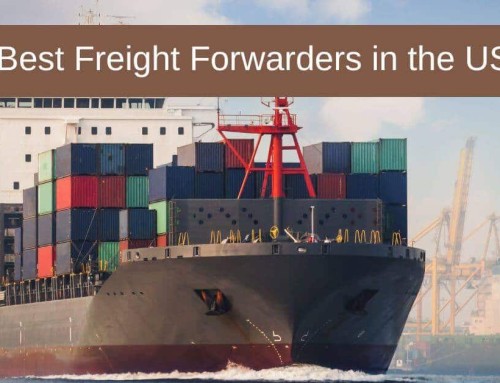

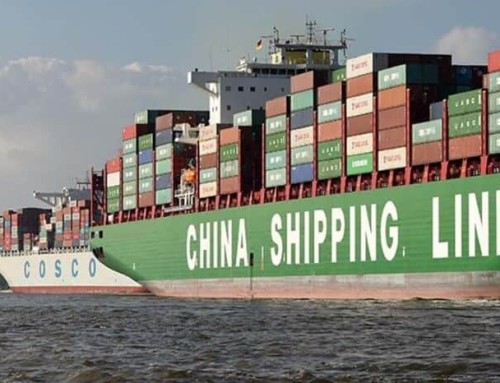
Leave A Comment